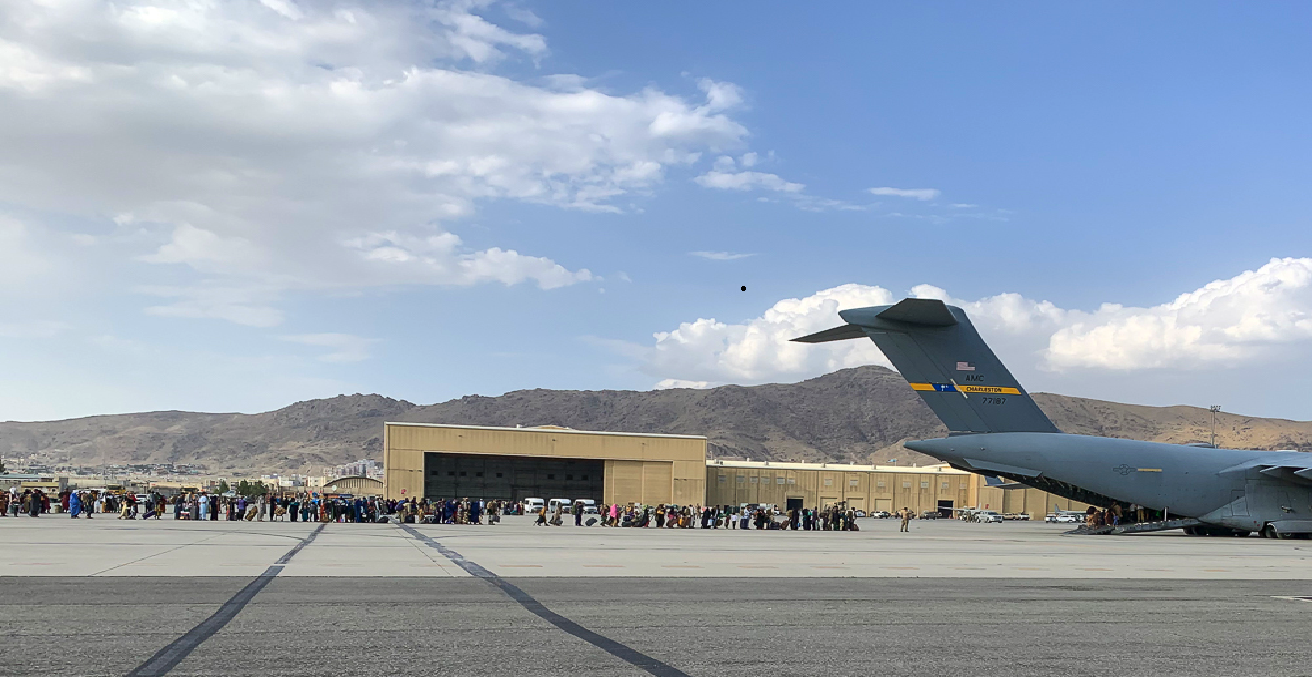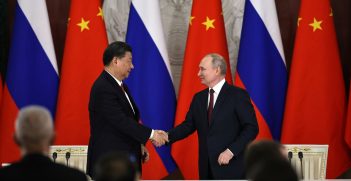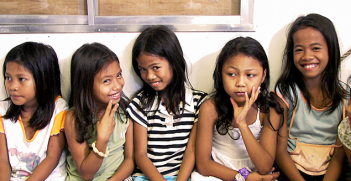ISIS-K: High-Profile Attacks, Low-Profile Organisation

ISIS-K poses a significant threat in Afghanistan following the recent suicide attacks in Kabul. As US forces withdraw from Afghanistan, the ISIS affiliate has become the most formidable threat for Taliban.
Twin suicide attacks rocked Hamid Karzai International Airport and at the nearby Baron Hotel in Kabul on 26 August. The Islamic State Khorasan Province (ISIS-K) claimed the attack, followed by threats of additional attacks against foreign forces “and their supporters” in Afghanistan. US President Joe Biden told the perpetrators: “We will hunt you down and make you pay.”
The attack has increased global concern over the ISIS affiliate in Afghanistan. The attack has also, once again, brought to light the bitter rivalry of ISIS-K with the Taliban and their al-Qaeda allies in Afghanistan.
Despite crackdowns from the US-led coalition, Afghan forces, and the Taliban, ISIS-K has remained a formidable threat in Afghanistan. Notably, on 20 August 2021, ISIS said its militants are “preparing for new stage of jihad” after alleging direct coordination between American forces and Taliban in Afghanistan via RocketChat, an ISIS propaganda website. Much reflecting this fear, on 15 April 2021, CIA Director Bill Burns said there is a “significant risk” of al-Qaeda and ISIS resurgence in Afghanistan after US withdrawal.
The US had significant information to forecast an attack by ISIS-K in Kabul. On 25 August, White House Press Secretary Jen Psaki said the ISIS-K threat to Hamid Karzai Airport poses “increasing concerns.” On the eve of the attack, Biden called the possibility of an attack by the group in Kabul a “very real risk.”
Rise of ISIS in Afghanistan
ISIS announced its expansion into Khorasan region, an area that historically encompasses parts of modern day Iran, Afghanistan, Pakistan, and Central Asia, in 2015. The group is comprised of 1500 to 2000 fighters, many of whom are foot soldiers who have defected from Pakistani extremist groups like Tehrik-E Taliban (TTP) and Lashkar-e-Jhangvi (LJ). Many of its top leaders and members come from hardliner elements of Pakistani Taliban, who were inclined to an extreme interpretation of Islam and Sharia and discontented with Taliban’s negotiations with the US. On 14 January 2016, the Pentagon designated ISIS-K a foreign terrorist organization. The same year, the first emir of the group Hafiz Saeed Khan was killed in a US drone strike.
In Afghanistan, the group is largely confined to a handful of districts in Nangarhar and Kunar provinces, which border Pakistan. The group’s ranks have suffered heavy casualties from US airstrikes and Afghan security force raids. However, the group has been quick to replace leaders with ambitious peers from other ISIS strongholds.
ISIS-K was the first major militant group to challenge the Islamic Emirate of Afghanistan under Mullah Omar. ISIS-K continuously opposed the legitimacy of the Taliban through propaganda videos and statements, demanding the Taliban defect to ISIS as “they will eventually cease to exist” ISIS-K has also fiercely criticised the TTP for entering talks with the Pakistan army.
The Taliban, according to some Taliban sources, set up a special task force in early October to actively hunt down Islamic State. Islamic State refused to congratulate the Taliban on its taking over of Kabul, accusing the Taliban of being a US proxy. In a commentary published after the fall of Kabul, the group accused the Taliban of betraying jihadists with the US withdrawal deal and vowed to continue its fight.
Major attacks
The comparatively low-profile ISIS-K in Afghanistan has been behind some of the most brutal and high-profile attacks in Afghanistan in recent years. The 2017 suicide attack at Sardar Mohammad Daud Khan hospital in Kabul, situated opposite the heavily fortified US Embassy, was claimed by Islamic State’s Amaq News Agency. The attack killed more than 30 people and injured another 50, including doctors and hospital staff.
In August 2020, the group claimed responsibility for a deadly assault on the Jalalabad Airfield and a prison on the base that ended after a 20-hour gun battle. The attack that killed at least 29 and freed hundreds of prisoners was one of the most complicated operations conducted by the group in Afghanistan.
In May 2021, the group carried out an attack outside Syed Al-Shahda School for girls in the Dasht-e-Barchi neighborhood of Kabul that killed at least 68 Afghans and injured another 165. The attack that targeted the ethnic Hazara community of Dasht-e-Barchi underlined the threat posed by the group to the Shia community.
While 2020 and early 2021 saw ISIS-K carrying out high profile urban suicide bombings, the group has been keeping a low-profile the last few weeks, with its last attack on 8 June. However, the number of attacks was declining from previous years, largely due to loss of manpower and resources.
The Kabul explosion came after the UK and US governments warned people to stay away from the airport after “very, very credible” intelligence of an imminent attack. The Taliban, whose fighters are guarding the perimeter outside the airport, said they faced the same threat. A Taliban official said: “Our guards are also risking their lives at Kabul airport, they face a threat too from the Islamic State group.” Following the attack, sources reported hundreds of ISIS-K members in the vicinity of the airport.
Conclusion
As much as ISIS-K encourages attacks in the West, their tactics have been more regional and aimed at “purifying” the Islamic community by killing religious minority groups like Shiites. Considering this, the continuing threat of targeted attacks against Shiite Muslims and the ethnic Hazara minorities in Afghanistan would require adequate attention. However, one cannot rule out the possibility of lone-wolf attacks by the group in the West, considering they have previously released footage pleading for such attacks.
The group has also been increasingly focusing on Kabul, mounting 6 major attacks in the capital in 2016, 18 attacks in 2017, and 24 in 2018, most of them targeting hospitals and schools. The group is currently headed by al-Muhajir, one of the “urban lions” of ISIS-K, with skills in guerilla warfare and planning suicide bomb attacks in cities. Further attacks targeting Kabul are likely under current circumstances, to disrupt the withdrawal and evacuation process and to demonstrate inability of the Taliban to provide adequate security during the process.
ISIS-K believes the Taliban is ideologically moderate, while they follow a lethal and extreme ideology. The group targets women workers and are against education of girls. For the Taliban, ISIS-K is not just an ideological rival and security threat, but also a competitor for resources, materials, and followers in Afghanistan. ISIS is not bound by any agreement with Washington or peace process with international community, unlike the Taliban, a deeply worrying fact. While the Taliban shares this challenge with the West, it would be interesting to see how they would cooperate in resisting this force in Afghanistan going forward. With the Taliban condemnation of the US drone strike against ISIS-K on 29 August, it appears that the Taliban would not be happy with operations done not in consultation with them.
Following the attack, on 27 August, Biden said that he has asked the military for options to strike ISIS-K targets including their assets and leadership. He also notably brushed away any tie-ups between Taliban and ISIS-K in the incident. The withdrawal of NATO forces will deprive US of its strike capability and tracking capacity on ISIS-K. Coupled with this, the recent attack only heightens US fears of Afghanistan being used as safe-haven for other militant groups to plan attacks on the West.
Pravda Parakkal is a political researcher in Melbourne and expert on South Asia.
This article is published under a Creative Commons License and may be republished with attribution.





